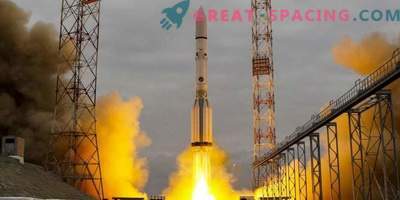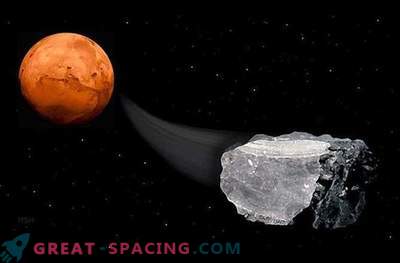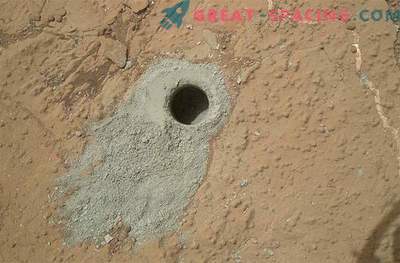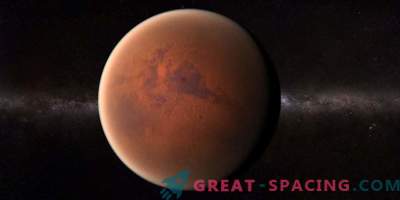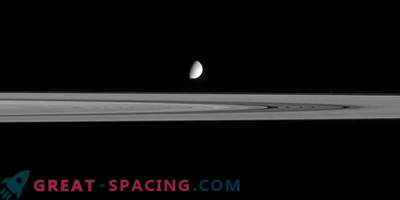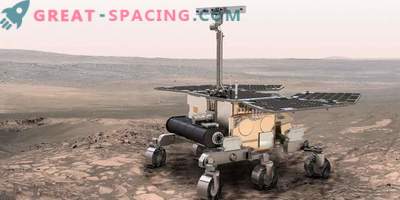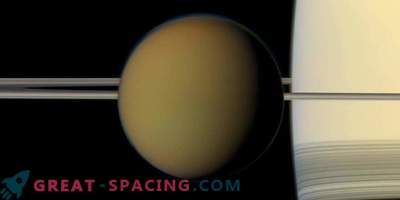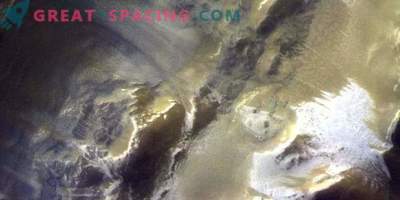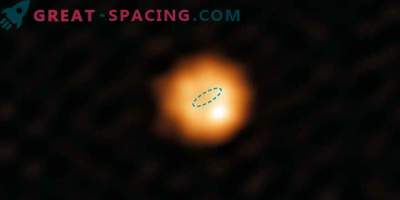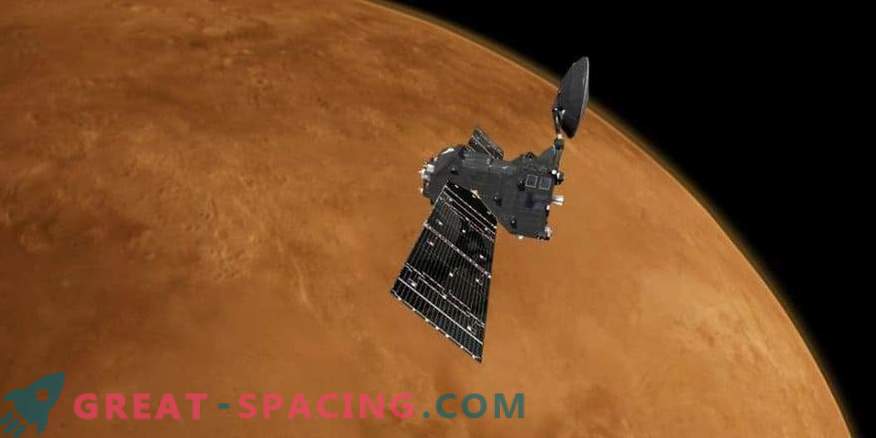
Trace Gas Orbiter reached its final orbital point after a year of travel ending in February. This amazing maneuver allowed the ship to slide along the upper part of the atmospheric layer, using the resistance of the solar wings. This allowed the transition from the original high-elliptical 4-day orbit (200 x 98000 km) to an almost circular trajectory of 400 km.
Now the unit rotates around Mars every 2 hours. After calibrating and installing the new software, it will begin scientific observations. This is an important milestone in the ExoMars program and an amazing achievement for Europe.
The main goal is to conduct a detailed list of gas traces. We are talking about those substances that make up less than 1% of the total Martian atmosphere. In addition, the orbiter will search for traces of methane and other gases that might hint at biological or geological activity.
Under terrestrial conditions, organisms provide most of the planet’s methane. It is also a major component of natural hydrocarbon gas reservoirs. A certain part comes from volcanic and hydrothermal activities. It is expected that Martian methane will have a short lifespan (approximately 400 years), since it is destroyed by the UV light of the Sun. It also reacts with other atmospheric elements and is dissipated by the winds. That is, if we find traces now, it means that it was released relatively recently.
Early observations were made by the Mars Express and the Curiosity Rover. But the true nature of the results is still under discussion. Trace Gas Orbiter will be able to detect and analyze methane and other gas traces in extremely low concentrations due to improved accuracy by 3 orders of magnitude. He will also be able to distinguish between possible sources.
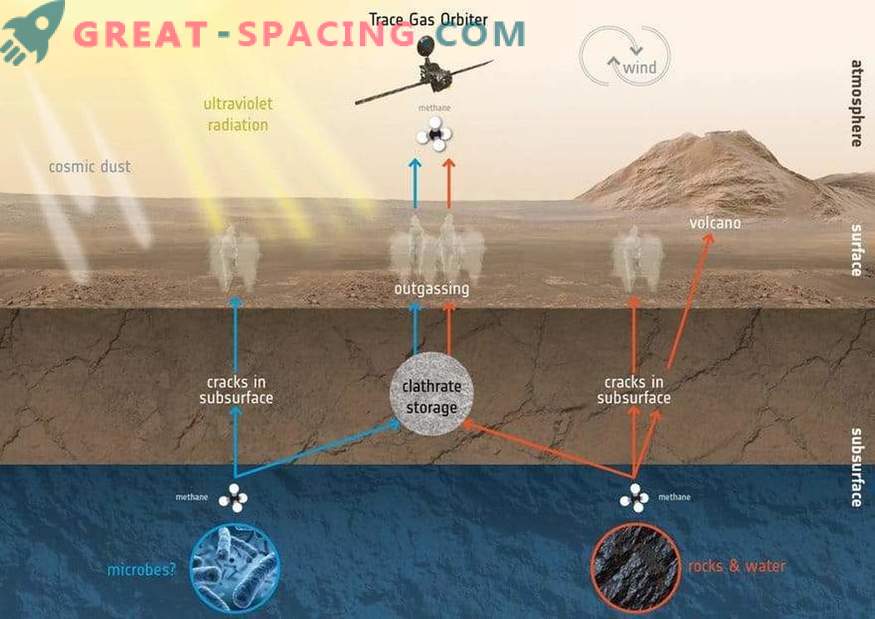
How to create and destroy methane on the Red Planet
Four instruments will make additional measurements of the atmosphere, surface and interior. The camera will help determine the characteristics on the surface that may be associated with the sources of the released gases.
In addition, the tools will search for hidden under the surface of water ice, which will also affect the choice of future landing sites missions. The device will be able to act as a communication relay for NASA Opportunity and Curiosity rovers, ahead of the arrival of InSight.


